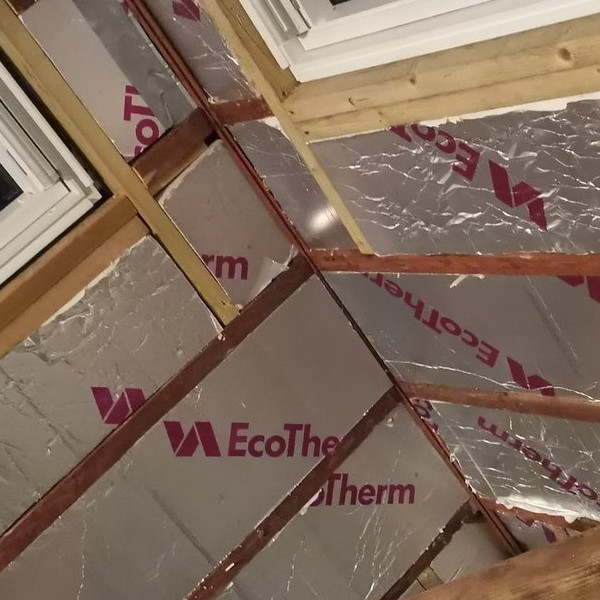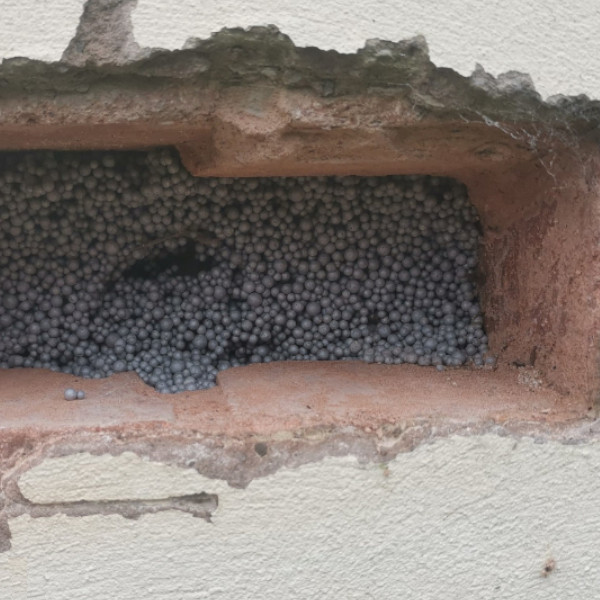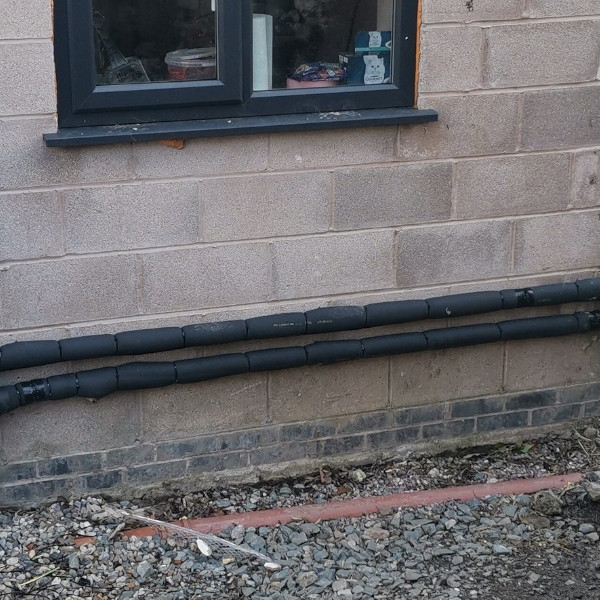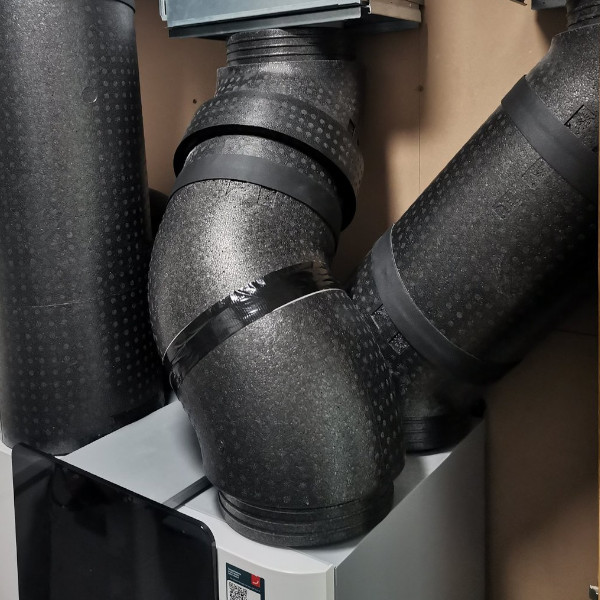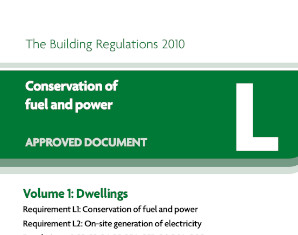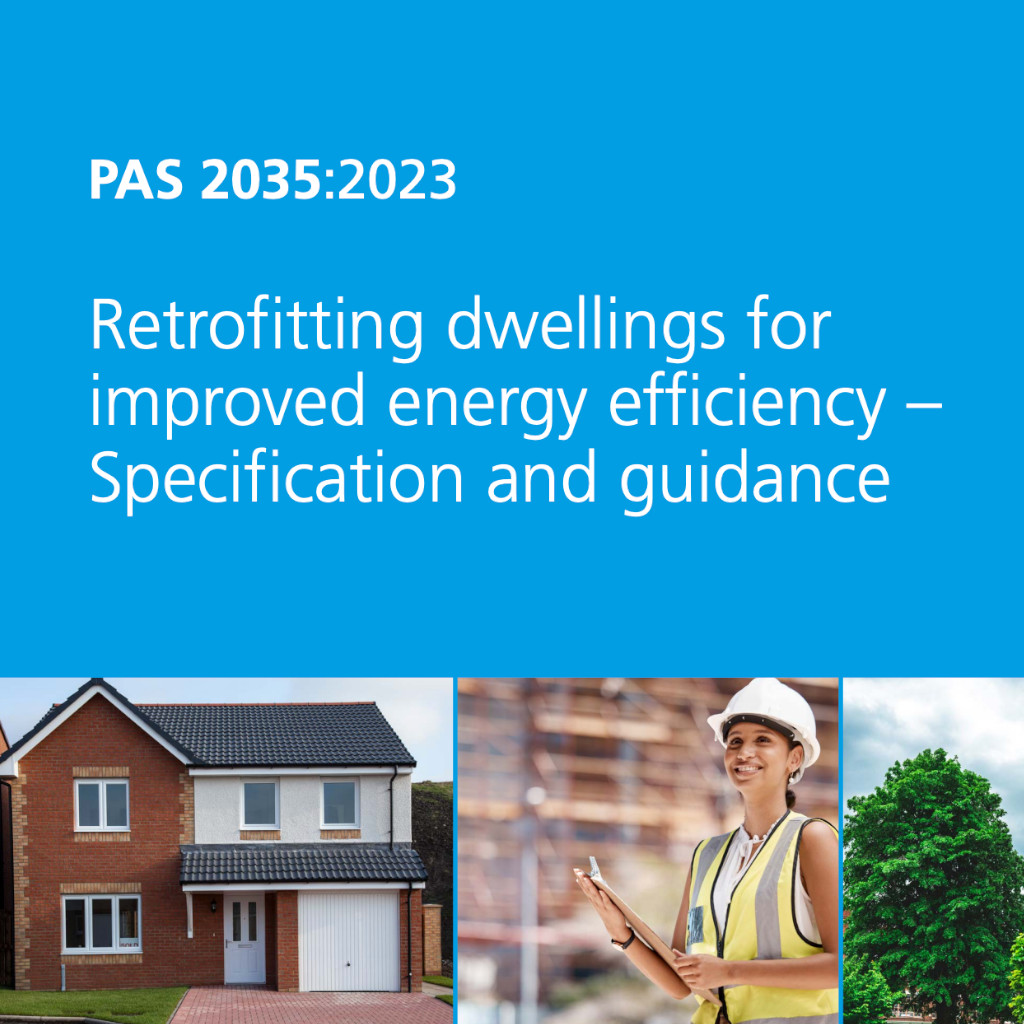Insulation basics.
When insulating our homes, there are crucial factors to consider, ensuring optimal energy efficiency, comfort, maintaining moisture balance and compliance with building regulations. Effective insulation can significantly reduce energy costs, enhance indoor comfort, and contribute to environmental sustainability. However, selecting the right insulation involves more than just picking a material off the shelf.
Key considerations include understanding thermal values, moisture control, wall types, historical context and the specific properties of different insulation materials. By carefully evaluating these aspects, homeowners can make informed decisions that suit their unique needs and conditions, ultimately creating a well-insulated, energy-efficient living space.

The first approach to make our homes warmer and more sustainable is to insulate before we install or upgrade to a new heating system, this not only allows us to save money* but approaches the property as our own personal ecosystem that we need to understand and maintain. If employing a contractor to install insulation then make sure they have the right qualifications, assurances, insurances and ideally be a member of the National Insulation Authority.
*Reducing the escape of heat from our properties, reduces the heating load, thus saving on fuel.
Types of insulation.
Insulation comes in all different shapes, sizes and composition, each performs to a required need and development is ongoing as we try to become more sustainable. Below is a very brief list. Each section throughout the site goes into more details.
Wall insulation. Can be applied, sprayed, filled, fixed and even wall papered!
Floor insulation. Can be fitted, laid, filled and even sprayed by robots.
Loft insulation. Can be fitted, sprayed or rolled.
Pipe insulation. Can be pre fitted, wrapped, sleeved, waterproof and fireproofed.Flat roof insulation. Coming soon.
Insulation can come as closed cell and open cell. Each section will go into more detail.
Thermal Values.
All insulation should have details of its R-value either on its packaging or specification information.
By having the details of the R-Values, you can work out the U-values, which you usually need for calculating the building regulation compliance thresholds.
R-Value.
Definition. The R-value measures the resistance of a material’s thermal resistance. It’s very much like a TOG value we have with sleeping bags and duvets!
Higher Is Better. The higher the R-value, the better the material insulates.
Usage. Used to rate the effectiveness of insulation materials. Commonly seen in products like fibreglass batts, loft roll insulation, foam boards, and spray foam insulation.
Units. Typically, measured square meters Kelvin per watt (m²·K/W)
The R-value measures a material’s ability to resist heat transfer. Both the type of material and its thickness are important factors. A higher R-value indicates better insulation properties.
U-Value.
Definition. The U-value, also known as thermal transmittance, measures how well a material or building element conducts heat (or insulates). It is the rate of heat transfer through combined materials or a structure.
Lower Is Better. The lower the U-value, the better insulation.
Usage. Used to rate the effectiveness of combined insulation and materials.
Units. Typically measured in watts per meter per degree Kelvin (W/m²·K).
The U-value measures a material’s ability to allow thermal transfer. Both the type of material and its thickness are important factors. A lower U-value indicates better insulation properties.
K-Value.
Definition. The K-value, also known as Lambda (λ) measures how well a material conducts heat. It is the rate of heat transfer through specific materials.
Usage. Used to rate the effectiveness of materials, mainly used by material scientists and designers of products used in the building industry.
Units. Typically measured in watts per meter per degree Kelvin (W/m·K).
The K-value measures a material’s ability to conduct heat. Only the material is measured. This value is used mainly by developers and material scientists. A lower K-value indicates better heat resistance.
Why is R-Value Important?
Higher R-value means better insulation, which helps keep your home warmer in the winter and cooler in the summer. This can lead to lower energy bills because heating and cooling systems don’t have to work as hard.
Comparing two insulations examples:
- 100mm mineral loft roll: Has an R-value of 2.50. (earthwool etc)
- 100mm PIR rigid board: Has an R-value of 4.30. (kingspan etc)
Rigid PIR boards can be installed at a reduced thickness, it insulates better because it has a higher R-value.
Why is U-Value Important?
The U-value, also known as thermal transmittance, measures how well a material or building element conducts heat.
It is the rate of heat transfer through combined materials or a structure. The U-value is expressed in units of watts per square meter per degree Kelvin (W/m²·K).
The U-value represents the overall heat transfer coefficient of an element, whether it be insulation, building fabric, or even air. It is calculated as the *reciprocal of the total thermal resistance (R-values) of all layers within the element.
Lower U-values indicate better insulation performance. When we look at building regulations, it is usually the U-Value that needs to be met.
*Reciprocal just means 1 divided by that number. R value of 6.8 would be U value of 0.14.
Choosing Insulation.
For a space with limited depth, like a suspended timber floor with 125mm joists we need to look at insulation products with a higher R value but a consideration to thickness, PIR boards would be a better choice for underfloor insulation because it provides better insulation in a thinner layer and would fit within the 125mm joists to meet regulations.
If there’s more space, let’s say 250mm joists, mineral wool could be a good option, even though it needs to be thicker to meet the same insulation standards, it’s easier to fit and cheaper.
We may not be able to physically fit insulation around window reveals and doorways due to openings and possibly fire regulations, so thinner materials may need to be used like Aerogel. The insulation choice will usually be determined by cost and system design, but also by the makeup of the space we are trying to insulate, especially with older traditional buildings.
Understanding Heat Resistance.
Everything around us has some resistance to heat transfer. The R-value is a way to measure this resistance, helping us choose the right materials to keep our homes comfortable and energy-efficient.
In short, the R-value helps you understand how effective an insulation material will be at keeping heat from passing through it. The higher the R-value, the better the insulation performance.
How to calculate.
To calculate the U-value of a building element, sum up the R-values of each layer and then take the reciprocal of the total resistance:
U = 1 divided by total resistance (all the R values) 1/R1+R2+R3…etc. This process applies to all insulation materials, although U-value calculations can become more complex with multiple materials and if external / internal temperatures are involved.
For example, walls and floors consist of various *layers with differing properties, these will require consideration of each layer’s R-value and any air gaps present. Additionally, noticeable temperature differences in different parts of the country must also be taken into account. A basic bit of maths should give you an idea what should and could be installed.
When we are insulating our homes, we tend to just look at the R value of the products to be used.
* different layer examples are, wood, plasterboard, plaster coat, brick, thermal brick, air etc.
Practical Example.
Let’s consider insulating under a suspended floor to meet a regulation that specifies a U-value of 0.25 W/m²K.
Using mineral loft roll with an R-value of 2.25 W/m²K and rigid PIR with an R value of 4.30 W/m²K.
With 100mm of loft roll: 𝑈 value = 1 / 2.25=0.44 W/m²·K (not meeting regulations)
With 150mm of loft roll: 𝑈 value = 1 / 3.40=0.29 W/m²·K (not meeting regulations)
With 200mm: 𝑈 value = 1 / (2.25+2.25)=0.22 W/m²·K (exceeding building regulations)
With 100mm of PIR between joists: 𝑈 value = 1 / 4.30=0.22W/m2KU (meeting building regulations)
U value calculators are available from most suppliers, some are listed and linked below.
Kingspan
Knauf
Ecotherm
Superglass
Pipe insulation.
Pipe insulation is applied to pipes for the purpose of the following:
Regulate temperature. Prevent heat loss or gain.
Reduce energy costs. Pipework for heating and hot water loves to give off heat, so adding insulation reduces the heat loss, thus saving fuel.
Frost protection. Pipework in unheated areas and condensate pipework.
Pipe insulation is commonly used in residential, commercial, and industrial settings, with materials ranging from foam and rubber to fibreglass and mineral wool, tailored to specific applications and environmental conditions. We are only concerned with the pipe insulation we would use in our homes.
Polyethylene foam pipe insulation.
Polyethylene foam pipe insulation is a lightweight, flexible material used to insulate pipes. It is made from closed-cell polyethylene foam. This type of insulation is commonly used in residential and commercial plumbing systems to reduce heat loss or gain, lower energy costs, and help prevent pipe corrosion.
Polyethylene foam pipe insulation is easy to install, typically available as pre-slit tubes that can be wrapped around pipes, and comes in various diameters and thicknesses to suit different pipe sizes and insulation needs. It is particularly well-suited for indoor applications.
Applications.
Internal hot and cold water supplies, central heating.
Class “O” Foam Rubber Insulation.
(Kaiflex, Armaflex, NMC, Thermaflex)
Class O foam rubber insulation is a type of flexible insulation material designed for thermal and acoustic applications. It is made from nitrile rubber or similar closed-cell materials, offering excellent thermal resistance, moisture control, and fire safety properties.
Thermal Insulation. It provides effective thermal resistance, reducing heat loss or gain in pipework, ductwork, and equipment.
Moisture Resistance. The closed-cell structure prevents water vapour penetration, reducing the risk of condensation and corrosion under insulation (CUI).
Durability. It can be resistant to UV, ozone, and mechanical damage, ensuring long-term performance in both indoor and outdoor environments. Some products come with full UV protection and some need to be coated.
Applications.
Hot water storage pipework, domestic plant rooms, heat pump circuits (internal and external), and external condensates.
EPDM Foam Rubber.
(Kaiflex, Armaflex, Zotefoam, Insul-tube by NMC)
EPDM rubber insulation is ideal for outdoor, high temperature and solar pipework use. The insulation has an in-built UV protective layer, meaning it can be installed outside without any further treatment or coverings. This insulation is also suitable for high-temperature pipework (up to 150 degrees Celsius), making it ideal for use on solar heating systems. The insulation is available in 2 metre unsplit tube lengths, long coils and flat sheets in a range of thicknesses.
Applications.
Heat pump external pipework, external condensate, solar.
Other insulations include.
Mineral Fibre Insulation. Foil Coated – Rock wool (HVAC and ducting)
Phenolic Foam Insulation. Foil Covered – Kingspan Kooltherm (HVAC and ducting)
Thermal ducting made from EPP material is a system of ducts and fittings for domestic mechanical ventilation with heat recovery (MVHR)
Regulations.
In the UK, insulation is covered by Part L of the Building Regulations, which focuses on the conservation of fuel and power
PAS 2035 is a comprehensive standard and not a regulation. It was introduced in 2019 as part of the UK government’s commitment to improving energy efficiency in buildings. If work being carried out on a UK funded scheme then the current PAS should be followed aswel as building regulations.


